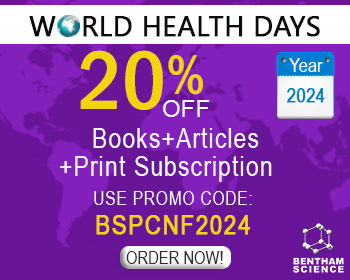Abstract
Thromboembolic disorders are the major cause of mortality and morbidity in Western societies. Coagulation enzymes, such as thrombin, factor Xa and a tissue factor/factor VIIa complex, together with platelet GPIIb/IIIa receptors, are the focal point of attention in pharmaceutical research aimed at finding new antithrombotic agents. However, finding orally active drugs for these particular molecular targets has proved to be anything but straightforward. Thrombin, factor Xa, tissue factor/factor VIIa and platelet GPIIb/IIIa receptors display a preference for molecules containing highly basic arginine and/or acidic aspartate moieties, which are, however, associated with poor bioavailability after oral application. Different approaches have been taken to achieve favourable absorption, metabolism, distribution and clearance, without compromising the antithrombotic activity of the compounds. This review highlights the use of the prodrug principle in optimising antithrombotic agents.
Keywords: Antithrombotic, prodrug, thrombin, factor Xa, factor VIIa, platelet
Current Pharmaceutical Design
Title: Metabolism-Directed Optimisation of Antithrombotics: The Prodrug Principle
Volume: 12 Issue: 1
Author(s): L. Peterlin-Masic, J. Cesar and A. Zega
Affiliation:
Keywords: Antithrombotic, prodrug, thrombin, factor Xa, factor VIIa, platelet
Abstract: Thromboembolic disorders are the major cause of mortality and morbidity in Western societies. Coagulation enzymes, such as thrombin, factor Xa and a tissue factor/factor VIIa complex, together with platelet GPIIb/IIIa receptors, are the focal point of attention in pharmaceutical research aimed at finding new antithrombotic agents. However, finding orally active drugs for these particular molecular targets has proved to be anything but straightforward. Thrombin, factor Xa, tissue factor/factor VIIa and platelet GPIIb/IIIa receptors display a preference for molecules containing highly basic arginine and/or acidic aspartate moieties, which are, however, associated with poor bioavailability after oral application. Different approaches have been taken to achieve favourable absorption, metabolism, distribution and clearance, without compromising the antithrombotic activity of the compounds. This review highlights the use of the prodrug principle in optimising antithrombotic agents.
Export Options
About this article
Cite this article as:
Peterlin-Masic L., Cesar J. and Zega A., Metabolism-Directed Optimisation of Antithrombotics: The Prodrug Principle, Current Pharmaceutical Design 2006; 12 (1) . https://dx.doi.org/10.2174/138161206775193172
| DOI https://dx.doi.org/10.2174/138161206775193172 |
Print ISSN 1381-6128 |
| Publisher Name Bentham Science Publisher |
Online ISSN 1873-4286 |
Call for Papers in Thematic Issues
"Tuberculosis Prevention, Diagnosis and Drug Discovery"
The Nobel Prize-winning discoveries of Mycobacterium tuberculosis and streptomycin have enabled an appropriate diagnosis and an effective treatment of tuberculosis (TB). Since then, many newer diagnosis methods and drugs have been saving millions of lives. Despite advances in the past, TB is still a leading cause of infectious disease mortality ...read more
Current Pharmaceutical challenges in the treatment and diagnosis of neurological dysfunctions
Neurological dysfunctions (MND, ALS, MS, PD, AD, HD, ALS, Autism, OCD etc..) present significant challenges in both diagnosis and treatment, often necessitating innovative approaches and therapeutic interventions. This thematic issue aims to explore the current pharmaceutical landscape surrounding neurological disorders, shedding light on the challenges faced by researchers, clinicians, and ...read more
Emerging and re-emerging diseases
Faced with a possible endemic situation of COVID-19, the world has experienced two important phenomena, the emergence of new infectious diseases and/or the resurgence of previously eradicated infectious diseases. Furthermore, the geographic distribution of such diseases has also undergone changes. This context, in turn, may have a strong relationship with ...read more
Melanoma and Non-Melanoma Skin Cancer Treatment: Standard of Care and Recent Advances
In this thematic issue, we aim to provide a standard of care of the diagnosis and treatment of melanoma and non-melanoma skin cancer. The editor will invite authors from different countries who will write review articles of melanoma and non-melanoma skin cancers. The Diagnosis, Staging, Surgical Treatment, Non-Surgical Treatment all ...read more
 15
15
- Author Guidelines
- Graphical Abstracts
- Fabricating and Stating False Information
- Research Misconduct
- Post Publication Discussions and Corrections
- Publishing Ethics and Rectitude
- Increase Visibility of Your Article
- Archiving Policies
- Peer Review Workflow
- Order Your Article Before Print
- Promote Your Article
- Manuscript Transfer Facility
- Editorial Policies
- Allegations from Whistleblowers
- Announcements
Related Articles
-
Endothelial Remodelling and Intracellular Calcium Machinery
Current Molecular Medicine Synthesis and Endothelin Receptor Binding Affinity of a Novel Class of 2-Substituted-4-aryl-3-quinolinecarboxylic Acid Derivatives
Medicinal Chemistry Molecular Markers for Individualized Therapy in Colorectal Cancer: Progress Towards a Pharmacogenomics Array
Current Pharmacogenomics and Personalized Medicine BACE1 Structure and Function in Health and Alzheimers Disease
Current Alzheimer Research The Role of Cytochrome P450 in Herb-Drug Interactions
Current Pharmacogenomics Progression of Alzheimer-type Neurofibrillary Tangles is Related to the Proximodistal Segments of the Hemispheric Arteries
Current Alzheimer Research Pharmacophore Generation and 3D-QSAR of Novel 2-(quinazolin-4- ylamino)-[1,4] Benzoquinone Derivatives as VEGFR-2 Inhibitors
Letters in Drug Design & Discovery Anti-Platelet Treatment of Middle-Sized Abdominal Aortic Aneurysms
Current Vascular Pharmacology Drugs Used to Treat Parkinsons Disease, Present Status and Future Directions
CNS & Neurological Disorders - Drug Targets Endothelial Therapy of Atherosclerosis and its Risk Factors
Current Vascular Pharmacology Structure, Function and Evolution of Clostridium botulinum C2 and C3 Toxins: Insight to Poultry and Veterinary Vaccines
Current Protein & Peptide Science Pyrazolo-Triazolo-Pyrimidine Derivatives as Adenosine Receptor Antagonists: A Possible Template for Adenosine Receptor Subtypes?
Current Pharmaceutical Design A Study on the Biological Activity of 2-thioxo-imidazolidin-4-ones
Letters in Drug Design & Discovery Skin Barrier Dysfunction and Systemic Sensitization to Allergens Through the Skin
Current Drug Targets - Inflammation & Allergy L-PRP/L-PRF in Esthetic Plastic Surgery, Regenerative Medicine of the Skin and Chronic Wounds
Current Pharmaceutical Biotechnology Prevention and Treatment of Venous Thromboembolism and Pulmonary Embolism: The Role of Novel Oral Anticoagulants
Current Clinical Pharmacology Medicinal Chemistry Perspective of Fused Isoxazole Derivatives
Current Topics in Medicinal Chemistry Metabolism and Pharmacological Mechanisms of Active Ingredients in <i>Erigeron breviscapus</i>
Current Drug Metabolism Potential Role of Natural Compounds Against Skin Aging
Current Medicinal Chemistry Drug Delivery Systems for the Treatment of Diabetes Mellitus: State of the Art
Current Pharmaceutical Design























